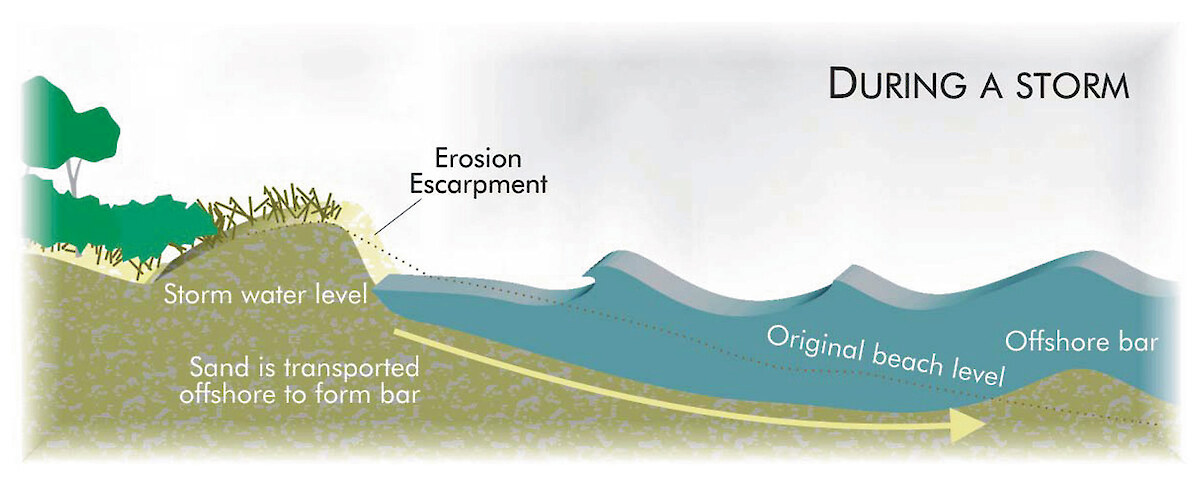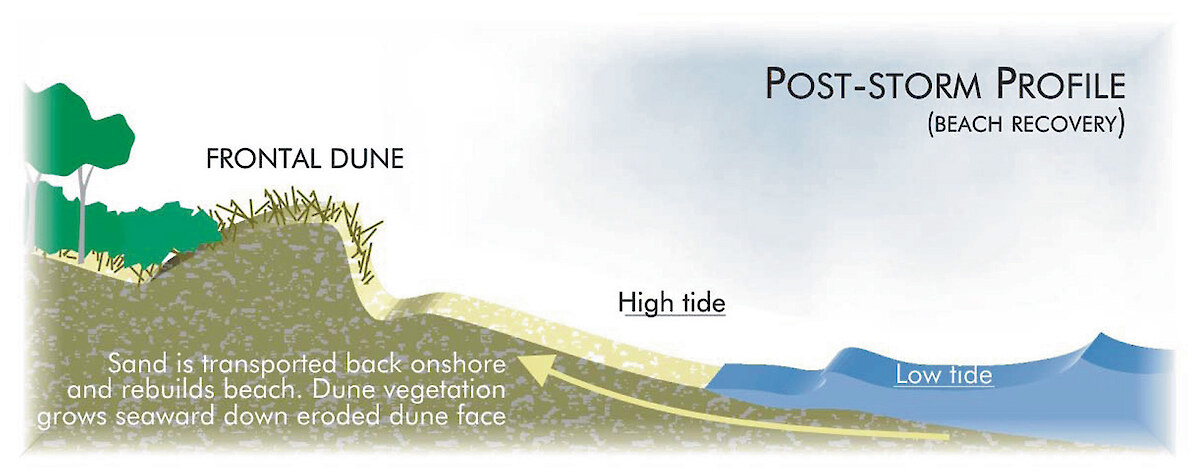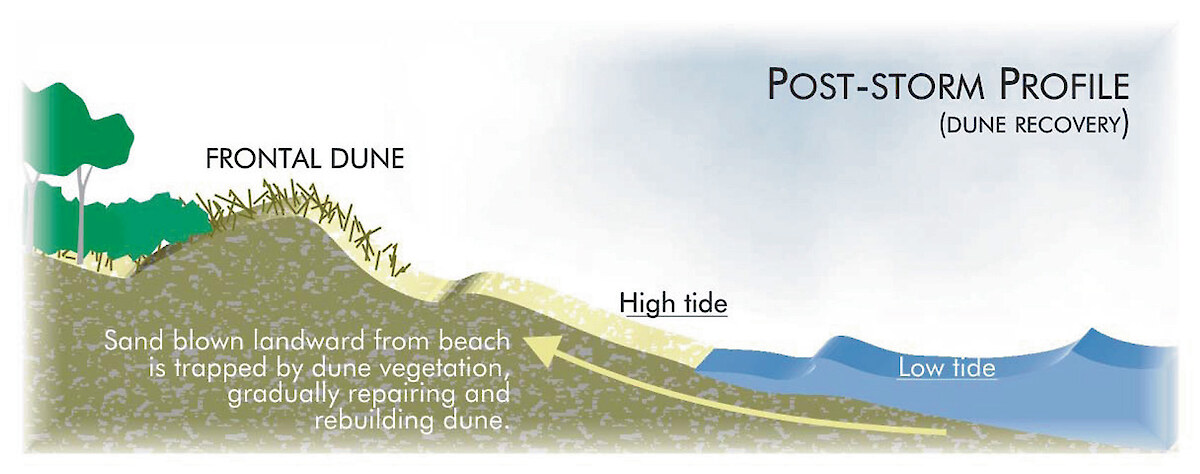Natural dune dynamics - storm cut and recovery
Sand dune systems are naturally dynamic. Sand is constantly moving between the sea, the beach and the dunes. This process is hardly noticeable most of the time but can be dramatic during storms.
Storm cut and recovery is a natural process that characterises virtually every sand beach on ocean shorelines around New Zealand. The following diagrams provide a simple overview of the process.
1. Beach profile
 This is a sandy beach as we like to see it – a nice wide high tide beach backed by a gently sloping and well vegetated sand dune. If the dune is in natural condition, the vegetation on the seaward face will be dominated by the native sand trapping species spinifex and pingao. The importance of these species is discussed further below and further details (see also the separate webpages dedicated to these critically important dune plants). This is what we think of as “normal”, the way things should be … but a beach has many other moods!
This is a sandy beach as we like to see it – a nice wide high tide beach backed by a gently sloping and well vegetated sand dune. If the dune is in natural condition, the vegetation on the seaward face will be dominated by the native sand trapping species spinifex and pingao. The importance of these species is discussed further below and further details (see also the separate webpages dedicated to these critically important dune plants). This is what we think of as “normal”, the way things should be … but a beach has many other moods!
2. During a storm
 During major storms, large waves occur. The beach has to change to adapt to this increased energy. Sea levels are also elevated above predicted tides by storm surge and other effects, enabling the waves to extend further landward. The waves lower the beach and erode the dune behind. Sand eroded from both the beach and the dune is transported offshore and deposited as a bar. The lowering of the beach and the deposition of sand offshore creates a wide shallow platform - which helps dissipate the increased wave energy which occurs during storms.
During major storms, large waves occur. The beach has to change to adapt to this increased energy. Sea levels are also elevated above predicted tides by storm surge and other effects, enabling the waves to extend further landward. The waves lower the beach and erode the dune behind. Sand eroded from both the beach and the dune is transported offshore and deposited as a bar. The lowering of the beach and the deposition of sand offshore creates a wide shallow platform - which helps dissipate the increased wave energy which occurs during storms.
3. After the storm (first few weeks) – beach recovery
 Over a period of weeks (and sometimes months) after the storm, more gentle waves gradually return the eroded sand from offshore back to the beach. This restores a high tide beach. If the dune has a good cover of spinifex and pīngao behind the eroded dune face, this sand trapping vegetation begins to extend down the dune face. The steep dune face will also gradually collapse to a more gentle angle.
Over a period of weeks (and sometimes months) after the storm, more gentle waves gradually return the eroded sand from offshore back to the beach. This restores a high tide beach. If the dune has a good cover of spinifex and pīngao behind the eroded dune face, this sand trapping vegetation begins to extend down the dune face. The steep dune face will also gradually collapse to a more gentle angle.
4. After the storm (longer term) – dune recovery
 As the native sand trapping vegetation grows down the seaward dune face, it slows the wind close to the ground. This reduces the amount of sand the wind can carry – so large volumes of sand carried in the wind drop out and are trapped by the plants. This natural sand trapping process gradually builds and repairs the dune. This natural dune repair is critically dependent on having appropriate native sand trapping species. The plants do not stop erosion (no vegetation can do this) – their importance lies in natural repair of the dune after the storm.
As the native sand trapping vegetation grows down the seaward dune face, it slows the wind close to the ground. This reduces the amount of sand the wind can carry – so large volumes of sand carried in the wind drop out and are trapped by the plants. This natural sand trapping process gradually builds and repairs the dune. This natural dune repair is critically dependent on having appropriate native sand trapping species. The plants do not stop erosion (no vegetation can do this) – their importance lies in natural repair of the dune after the storm.
Storm cut erosion and recovery is a normal coastal process where the shoreline is simply fluctuating backwards and forwards over time. Unless the beach is losing more sand than it gains (which is far rarer than we think), the erosion is not permanent.
